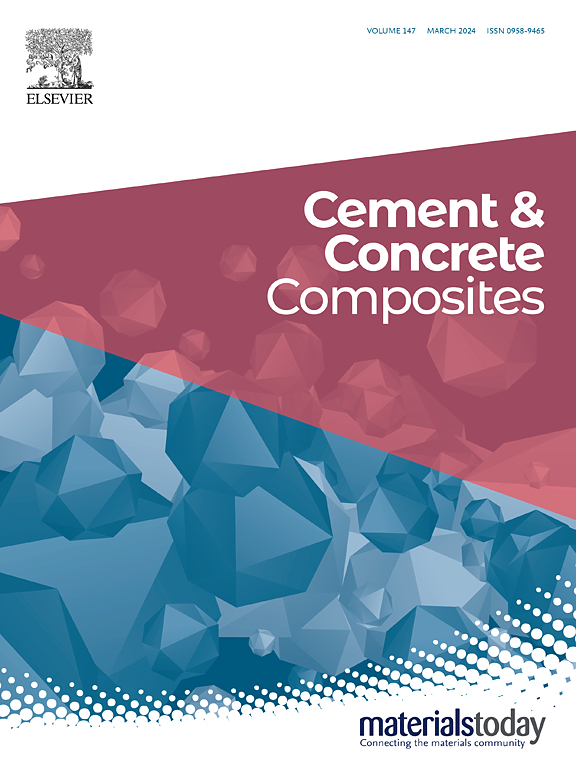不同馏分生物炭对水泥复合材料的影响研究
IF 10.8
1区 工程技术
Q1 CONSTRUCTION & BUILDING TECHNOLOGY
引用次数: 0
摘要
将生物炭作为一个整体进行研究并不能充分揭示其非均相结构对水泥复合材料性能的影响。本研究探讨了300℃、500℃和700℃热解生物炭物理分解得到的沉积物颗粒(SeP)、悬浮粗颗粒(CP)、可溶性组分和超细颗粒(SCUP)等不同组分对水泥复合材料性能的影响。结果表明,原始生物炭的粒径小于SeP,低温生物炭中CP和SeP的粒径大于高温生物炭。500℃时加入SeP的水泥复合材料抗压强度最高,比对照提高了1.63%。这是因为500℃时的SeP在水泥复合材料中表现出最佳的填充、成核和内部固化效应叠加效果。与此同时,生物炭减少了水泥的凝固时间,其中SeP在500°C时的效果最为明显,与对照相比,复合材料的凝固时间缩短了18%。此外,机器学习结果表明,SeP与水泥复合材料抗压强度的相关性最强。我们的发现为实现生物炭在水泥复合材料中的全部潜力提供了新的见解。本文章由计算机程序翻译,如有差异,请以英文原文为准。


Investigation of the effects of the biochar in different fractions on cement composites
The investigation of biochar (BC) as a whole can't fully reveal the effect of its heterogeneous structure on the properties of cement composites. In this study, the effects of these different fractions, including sediment particles (SeP), suspended coarse particles (CP), and soluble components and ultrafine particles (SCUP), obtained from 300 °C, 500 °C, and 700 °C pyrolyzed biochar via physical decomposition on the properties of cement composites were explored. The results indicated that the particle size of original biochar was smaller than that of SeP, while the particle sizes of CP and SeP in low-temperature biochar were larger than those in high-temperature biochar. The addition of SeP at 500 °C to cement composites exhibited the highest compressive strength, which increased by 1.63 % compared to the control. This is because SeP at 500 °C exhibits the best superposition effect of filling, nucleation and internal curing effects in cement composites. Meanwhile, biochar reduced the setting time of the cement, with SeP at 500 °C exhibiting the most pronounced effect, reducing the composite's setting time by 18 % compared to the control. Furthermore, the machine learning results indicated that SeP has the strongest correlation with the compressive strength of cement composites. Our findings provide new insights to realize the full potential of biochar in cement composites.
求助全文
通过发布文献求助,成功后即可免费获取论文全文。
去求助
来源期刊

Cement & concrete composites
工程技术-材料科学:复合
CiteScore
18.70
自引率
11.40%
发文量
459
审稿时长
65 days
期刊介绍:
Cement & concrete composites focuses on advancements in cement-concrete composite technology and the production, use, and performance of cement-based construction materials. It covers a wide range of materials, including fiber-reinforced composites, polymer composites, ferrocement, and those incorporating special aggregates or waste materials. Major themes include microstructure, material properties, testing, durability, mechanics, modeling, design, fabrication, and practical applications. The journal welcomes papers on structural behavior, field studies, repair and maintenance, serviceability, and sustainability. It aims to enhance understanding, provide a platform for unconventional materials, promote low-cost energy-saving materials, and bridge the gap between materials science, engineering, and construction. Special issues on emerging topics are also published to encourage collaboration between materials scientists, engineers, designers, and fabricators.
 求助内容:
求助内容: 应助结果提醒方式:
应助结果提醒方式:


